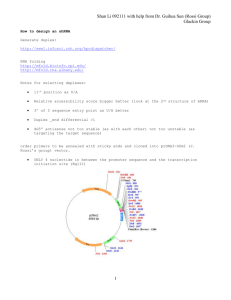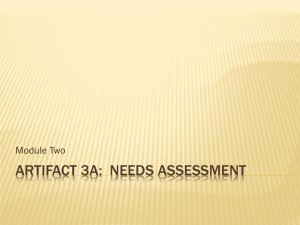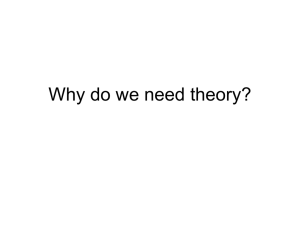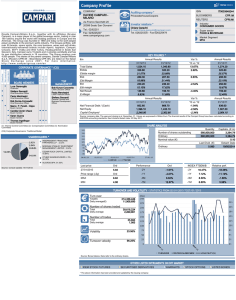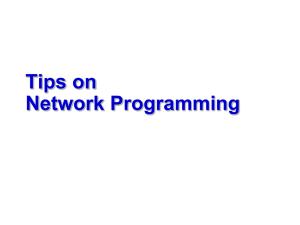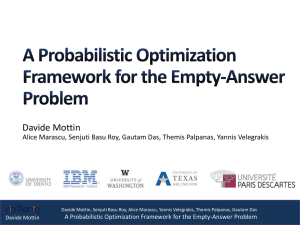Using Sockets in Java
advertisement
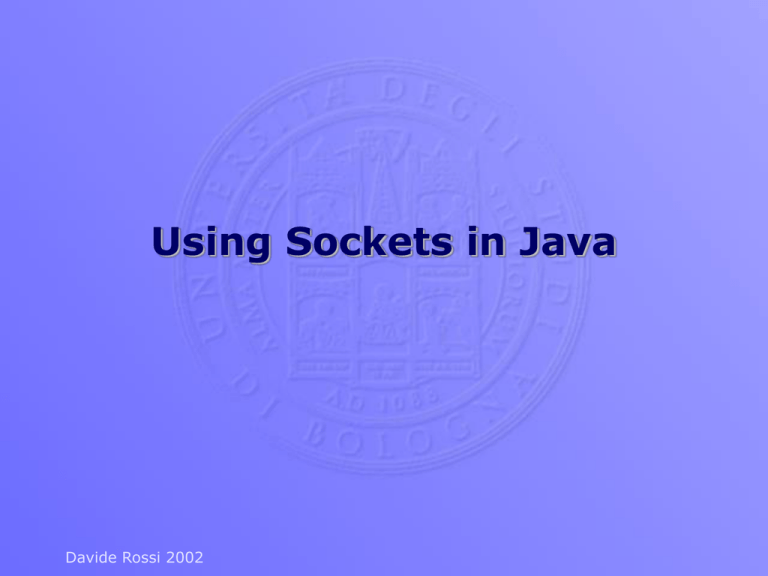
Using Sockets in Java Davide Rossi 2002 TCP/IP A protocol is a set of rules that determine how things communicate with each other The software which manages Internet communication follows a suite of protocols called TCP/IP The Internet Protocol (IP) determines the format of the information as it is transferred The Transmission Control Protocol (TCP) dictates how messages are reassembled and handles lost information Davide Rossi 2002 2 IP Internet Protocol: RFC 791 Base protocol for data transmission It is connectionless and unreliable It is routable Defines the addressing of the nodes using IP addresses Davide Rossi 2002 3 IP and Internet Addresses Each computer on the Internet has a unique IP address, such as: 130.136.1.110 Most computers also have a unique Internet name, which also is referred to as an Internet address: www.cs.unibo.it The first part indicates a particular computer (www) The rest is the domain name, indicating the organization (cs.unibo.it) Davide Rossi 2002 4 TCP Transmission Control Protocol: RFC 793 It’s a reliable connection-oriented protocol Reliability is achieved using packets indexing and generating “ack” messages for each received packet Davide Rossi 2002 5 TCP Creating a connection is an asymmetrical process; once the connection is established the protocol becomes symmetric Ports are used to initiate a connection Davide Rossi 2002 6 Connection Sequence Server my.server.it Client Web Browser http://my.server.it FTP POP 23 Davide Rossi 2002 HTTP 110 80 7 TCP Standard Ports Below 1024, assigned by the IANA 21 FTP 23 Telnet 80 HTTP 110 POP3 119 NNTP Davide Rossi 2002 8 TCP Connections in Java The Socket class is used for handling TCP connections in Java A socket can be used as a data source for a stream The SocketServer class is used to establish a connection Davide Rossi 2002 9 Waiting for a Connection ServerSocket ss = new ServerSocket(1234); Socket s = ss.accept(); Davide Rossi 2002 10 Connecting to a Remote Host Socket s = new Socket(“my.host.it”, 1234); Davide Rossi 2002 11
